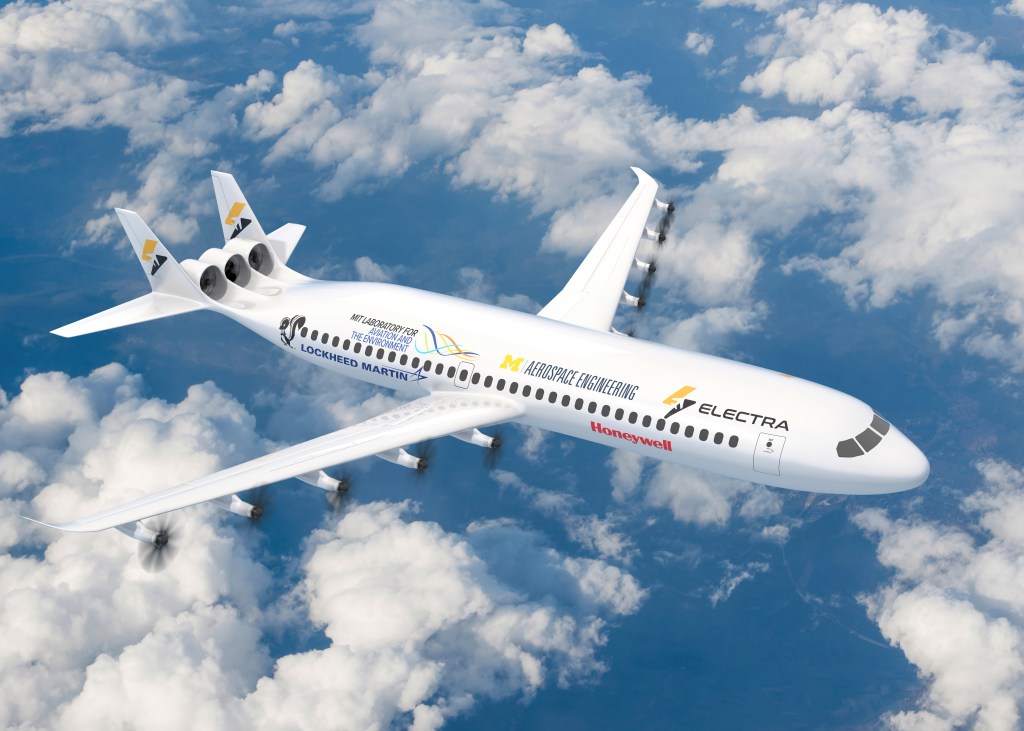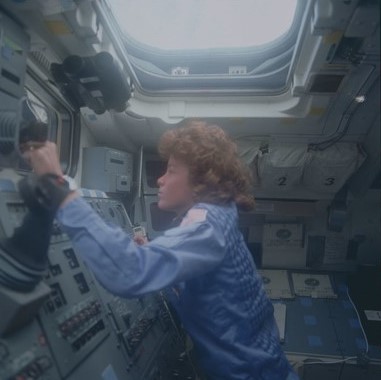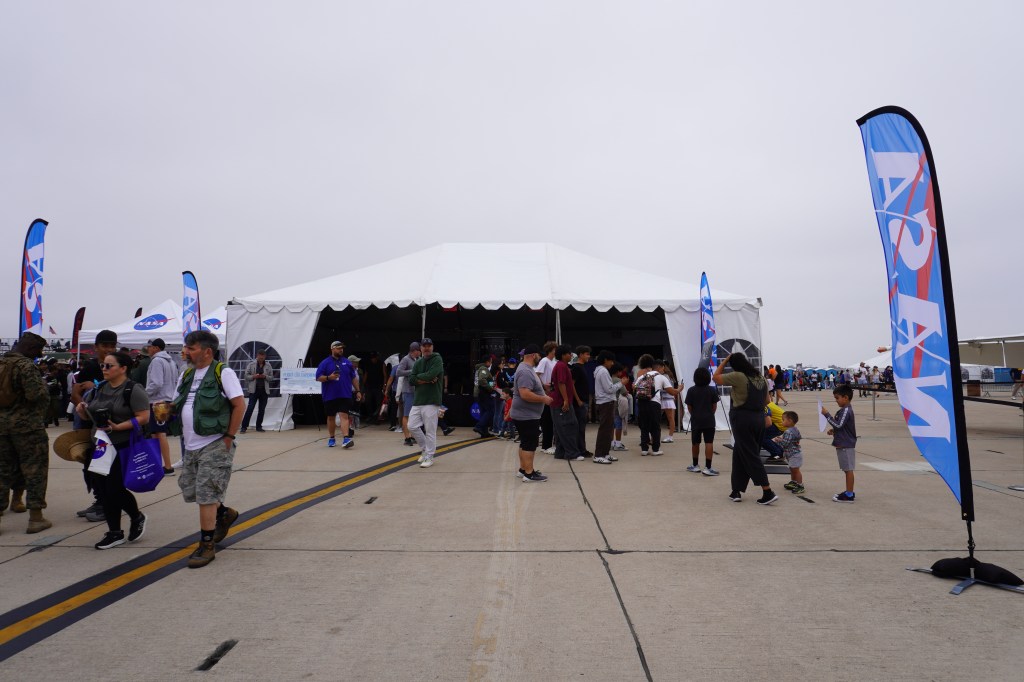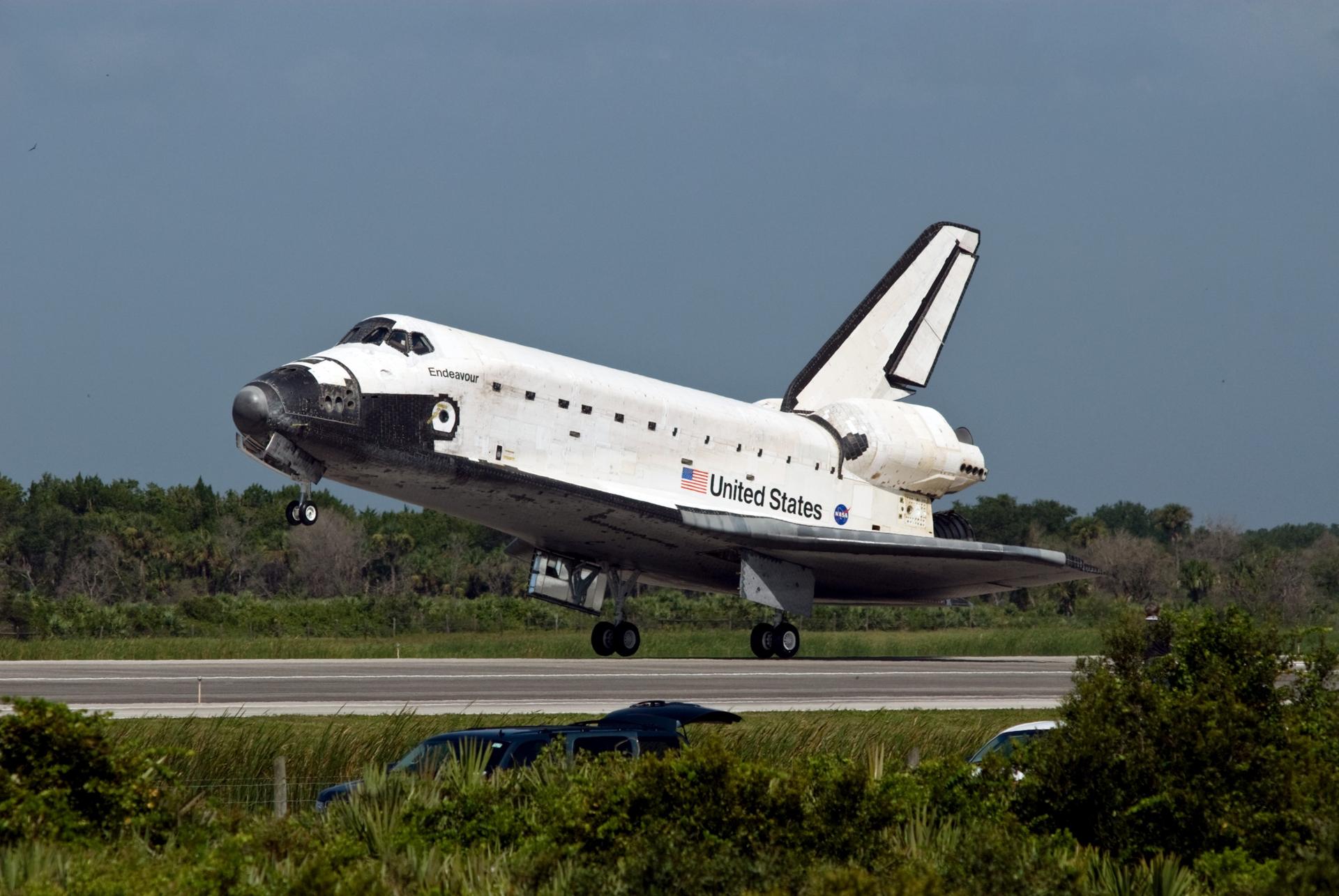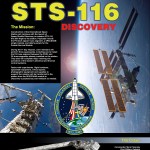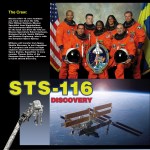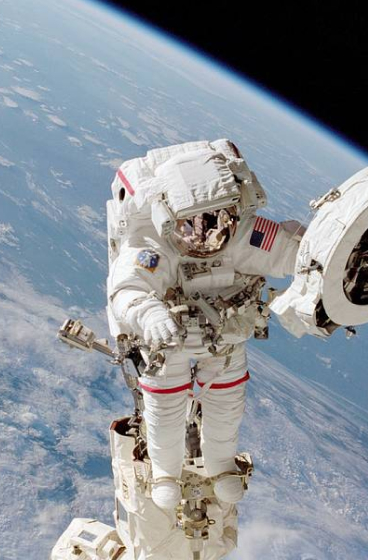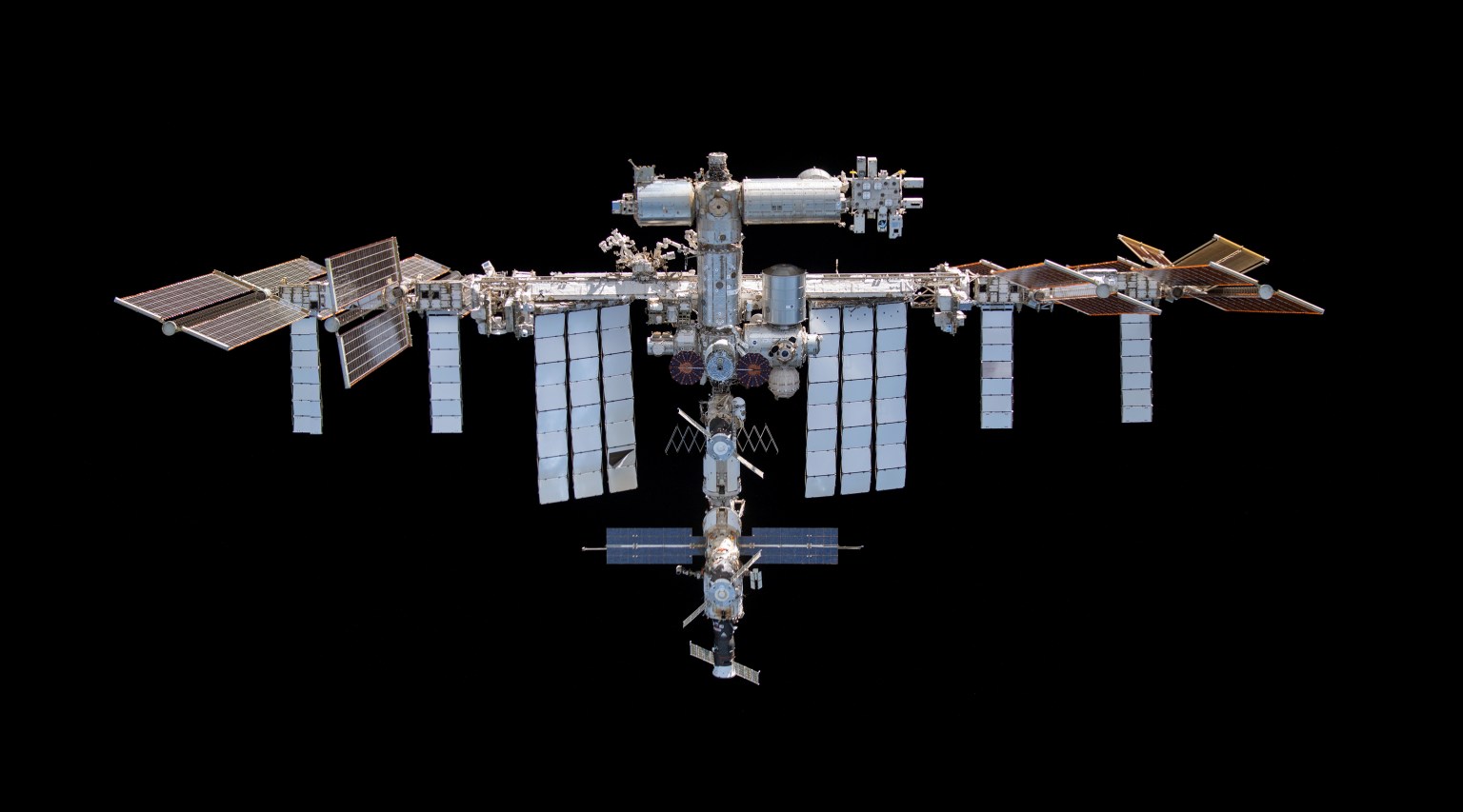
STS-116
STS-116 crew had one of the most complex missions ever to the International Space Station.
orbiter
mission duration
Launch
Landing

Mission Facts
Mission: International Space Station Assembly Flight 12A.1
Space Shuttle: Discovery
Launch Pad: 39B
Launched: Dec. 9, 2006, 8:47 p.m. EDT
Landing Site: Kennedy Space Center, Fla.
Landing: Dec. 22, 2006, 5:32 p.m. EDT
Runway: 15
Revolution: 204
Mission Duration: 12 days, 20 hours, 45 minutes, 16 seconds
Main Gear Touchdown: 5:32:00 p.m. EST
Nose Gear Touchdown: 5:32:12 p.m. EST
Wheel Stop: 5:32:52 p.m. EST
Miles Traveled: 5.3 million
Primary Payload: Twentieth station flight (12A.1), P5 Truss, SPACEHAB
Crew
Mark L. Polansky, Commander
William A. Oefelein, Pilot
Thomas Reiter, Mission Specialist
Joan E. Higginbotham, Mission Specialist
Robert L. Curbeam, Mission Specialist
Nicholas J. M. Patrick, Mission Specialist
Sunita L. Williams, Mission Specialist
Christer Fuglesang, Mission Specialist
Launch Highlights
NASA managers postponed the Dec. 7 space shuttle launch attempt until Dec. 9 because of low cloud cover. The interim day’s weather was not expected to be favorable for a launch attempt.
The Space Shuttle Discovery and its seven-member crew lifted off Dec. 9 from NASA’s Kennedy Space Center in Florida on one of the most complex missions ever to the International Space Station.
Landing Highlights
Nose gear touchdown was at 5:32:12 p.m. and wheel stop was at 5:32:52 p.m. Mission elapsed time was 12 days, 20 hours, 45 minutes. This was the 64th landing at KSC.
The original landing date of Dec. 21 was postponed due to the addition of a fourth spacewalk. Inclement weather at KSC caused some concern and the first landing opportunity at 3:56 p.m. EST was waved off. The first chance for landing at Edwards Air Force Base in California was passed due to gusty winds. Weather conditions at KSC took a dramatic turn for the better and landing proceeded on the second opportunity. Returning with the crew was astronaut Thomas Reiter after his six-month tenure as part of the Expedition 14 crew on the space station. He was replaced by Flight Engineer Suni Williams.
Mission Highlights
Discovery rocketed into a dark Florida sky on the first night launch in more than four years. After reaching orbit, the crew used the shuttle’s robotic arm and orbiter boom sensor system to examine Discovery’s thermal protection system.
Docking with the International Space Station occurred at 4:12 p.m. Dec. 11. An impromptu wing inspection was called for after a minor vibration reading on the port wing sensor. The imagery analysis team determined the shuttle’s heat shield could support a safe return to Earth and further inspection was not needed.
Three spacewalks (EVAs) were planned to unberth the P5 truss from Discovery’s payload bay, install it on the station’s main truss and rewire the station’s electrical system to its permanent power grid.
Using a start-stop-restart process, the crew spent six hours Dec. 13 attempting to fold and retract the port array on the P6 integrated truss structure without success. Guidewires apparently snagged. Repeated attempts the next day were also unsuccessful. A fourth and unscheduled spacewalk was added to the mission to try again to loosen and retract the port array.
With the fourth EVA, Mission Specialist Robert Curbeam set a record for the most spacewalks during a shuttle mission. He has a total of 45 hours, 34 minutes of spacewalking time.
The total time spent on spacewalks on this mission was 25 hours, 45 minutes.
Before undocking from the station, Mission Specialist Joan Higginbotham and her cargo team transferred more than two tons of food, water and equipment for the Expediction 14 crew. They also filled Discovery’s pressurized cargo carrier with equipment and experiment samples for return to Earth.
- EVA No. 1 — 6 hours, 36 minutes: Dec. 12. Mission Specialists Curbeam and Christer Fuglesang attached the P5 truss and replaced a failed camera needed to support future assembly tasks. They completed additional tasks of plugging the new segment into the existing truss, removing the locks that held it steady during launch, and opening a latch to allow the P6 segment to be attached at the end when it is moved from its temporary location.
- EVA No. 2 — 5 hours: Dec. 14. Curbeam and Fuglesang exited Discovery again to start rewiring the station’s power. Using power generated by the solar arrays delivered in September, they rewired channels two and three. Before the cable connections could be swapped, some of the station’s systems, such as lights, communication gear, ventilation fans and backup computers, had to be shut down. In less than three hours, one of two external thermal control system loops was shedding excess heat into space and the DC-to-DC converter units were regulating power voltages.
Despite problems retracting the P6 solar array, the P4 arrays were able to rotate and track the sun, generating power for the station.
Curbeam and Fuglesang also were able to relocate two small handcarts on the rails of the station’s main truss, put a thermal cover on the station’s robotic arm, and install bags of tools for future spacewalkers. - EVA No. 3 — 7 hours, 31 minutes: Dec. 16. Curbeam and Williams finished rewiring the station. They also installed a robotic arm grapple fixture and positioned three bundles of Russian debris shield panels outside the Zvezda service module, to be installed on a future spacewalk. Then the spacewalkers tackled grommets and guide wires on the P6 solar array and shook the array while the crew inside the station reeled it in one bay at a time. They achieved 65 percent retraction.
- EVA No. 4 — 6 hours, 38 minutes: Dec. 18. Curbeam and Fuglesang finished the P6 retraction, guiding the array into its blanket box. They were aided by Williams and Higginbotham who used the station’s robotic arm to position the spacewalkers near the array. Afterward, the spacewalkers also secured multi-layer insulation that had been installed on the robotic arm during an earlier spacewalk.
The retraction set the stage for the spring 2007 shuttle mission, when the station’s starboard overhead array will also be stowed. The arrays will be moved to the far end of the port truss on STS-120 and redeployed.
The crew wrapped up eight days of docked operations, separating from the space station on Dec. 19. On Dec. 20, they inspected the heat shield for possible micrometeoroid debris damage using the sensor-equipped orbiter boom sensor system unfolded from the payload bay. They also deployed small technology demonstration satellites, known as MEPSI or Micro-Electromechanical System-based PICOSAT Inspector, for the U.S. Department of Defense’s Space Test Program, as well as student-experiment scientific satellites and the Atmospheric Neutral Density Experiment (ANDE) that will measure the density and composition of the low-Earth-orbit atmosphere while tracked from the ground.
On Dec. 21, Mission Control confirmed the shuttle’s heat shield was in good shape and the crew and orbiter could plan for a safe landing.
STS-116
Resources
Shuttle News
Retired Space Shuttle Locations
Shuttle Atlantis – Kennedy Space Center Visitor Complex Shuttle Discovery – Steven F. Udvar-Hazy Center Shuttle Endeavour – California Science…
Read the Story

